10 start with O start with O
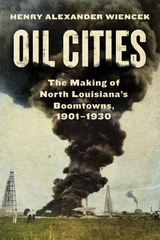
How international oil companies navigated the local, segregated landscape of north Louisiana in the first decades of the twentieth century.
In 1904, prospectors discovered oil in the rural parishes of North Louisiana just outside Shreveport. As rural cotton fields gave way to dense, industrial centers of energy extraction, migrants from across the US—and the world—rushed to take a share of the boom. The resulting boomtowns, most notoriously Oil City, quickly gained a reputation for violence, drinking, and rough living. Meanwhile, North Louisiana’s large Black population endured virulent white supremacy in the oil fields and the courtrooms to earn a piece of the boom, including one Black woman who stood to become the wealthiest oil heiress in America.
In Oil Cities, Henry Wiencek uncovers what life was like amidst the tent cities, saloons, and oil derricks of North Louisiana’s oil boomtowns, tracing the local experiences of migrants, farmers, sex workers, and politicians as they navigated dizzying changes to their communities. This first historical monograph on the region’s dramatic oil boom reveals a contested history, in which the oil industry had to adapt its labor, tools, and investments to meet North Louisiana’s unique economic, social, political, and environmental dynamics.
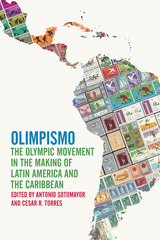
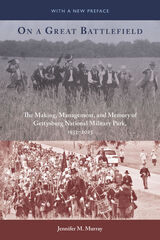
Service manages, none hold more national appeal and recognition than Gettysburg National
Military Park. Welcoming more than one million visitors annually from across the
nation and around the world, the National Park Service at Gettysburg holds the enormous
responsibility of preserving the war’s “hallowed ground” and educating the public, not
only on the battle, but also about the Civil War as the nation’s defining moment. Although
historians and enthusiasts continually add to the shelves of Gettysburg scholarship, they
have paid only minimal attention to the battlefield itself and the process of preserving,
interpreting, and remembering the bloodiest battle of the Civil War. In On a Great Battlefield,
Jennifer M. Murray provides a critical perspective to Gettysburg historiography by
offering an in-depth exploration of the national military park and how the Gettysburg
battlefield has evolved since the National Park Service acquired the site in August 1933.
As Murray reveals, the history of the Gettysburg battlefield underscores the complexity
of preserving and interpreting a historic landscape. After a short overview of early
efforts to preserve the battlefield by the Gettysburg Battlefield Memorial Association
(1864–1895) and the United States War Department (1895–1933), Murray chronicles the
administration of the National Park Service and the multitude of external factors—including
the Great Depression, the New Deal, World War II, the Civil War Centennial, and
recent sesquicentennial celebrations—that influenced operations and molded Americans’
understanding of the battle and its history. Haphazard landscape practices, promotion of
tourism, encouragement of recreational pursuits, ill-defined policies of preserving cultural
resources, and the inevitable turnover of administrators guided by very different
preservation values regularly influenced the direction of the park and the presentation
of the Civil War’s popular memory. By highlighting the complicated nexus between preservation,
tourism, popular culture, interpretation, and memory, On a Great Battlefield
provides a unique perspective on the Mecca of Civil War landscapes.
Jennifer M. Murray, assistant professor of history at the University of Virginia’s College
at Wise, is the author of The Civil War Begins. Her articles have appeared in Civil War
History, Civil War Times, and Civil War Times Illustrated.
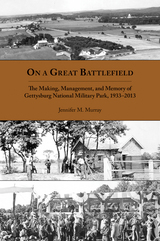
Service manages, none hold more national appeal and recognition than Gettysburg National
Military Park. Welcoming more than one million visitors annually from across the
nation and around the world, the National Park Service at Gettysburg holds the enormous
responsibility of preserving the war’s “hallowed ground” and educating the public, not
only on the battle, but also about the Civil War as the nation’s defining moment. Although
historians and enthusiasts continually add to the shelves of Gettysburg scholarship, they
have paid only minimal attention to the battlefield itself and the process of preserving,
interpreting, and remembering the bloodiest battle of the Civil War. In On a Great Battlefield,
Jennifer M. Murray provides a critical perspective to Gettysburg historiography by
offering an in-depth exploration of the national military park and how the Gettysburg
battlefield has evolved since the National Park Service acquired the site in August 1933.
As Murray reveals, the history of the Gettysburg battlefield underscores the complexity
of preserving and interpreting a historic landscape. After a short overview of early
efforts to preserve the battlefield by the Gettysburg Battlefield Memorial Association
(1864–1895) and the United States War Department (1895–1933), Murray chronicles the
administration of the National Park Service and the multitude of external factors—including
the Great Depression, the New Deal, World War II, the Civil War Centennial, and
recent sesquicentennial celebrations—that influenced operations and molded Americans’
understanding of the battle and its history. Haphazard landscape practices, promotion of
tourism, encouragement of recreational pursuits, ill-defined policies of preserving cultural
resources, and the inevitable turnover of administrators guided by very different
preservation values regularly influenced the direction of the park and the presentation
of the Civil War’s popular memory. By highlighting the complicated nexus between preservation,
tourism, popular culture, interpretation, and memory, On a Great Battlefield
provides a unique perspective on the Mecca of Civil War landscapes.
Jennifer M. Murray, assistant professor of history at the University of Virginia’s College
at Wise, is the author of The Civil War Begins. Her articles have appeared in Civil War
History, Civil War Times, and Civil War Times Illustrated.
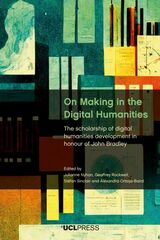
On Making in the Digital Humanities fills a gap in our understanding of digital humanities projects and craft by exploring the processes of making as much as the products that arise from it. Focusing on the interwoven layers of human and technological textures that constitute digital humanities scholarship, it assembles a group of well-known, experienced, and emerging scholars in the digital humanities to reflect on various forms of making. The chapters gathered here are individually important, but together provide a very human view of what it is to do the digital humanities, in the past, present, and future. This book will accordingly be of interest to researchers, teachers, and students of the digital humanities; creative humanities, including maker spaces and culture; information studies; the history of computing and technology; and the history of science and the humanities.
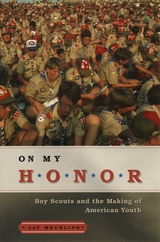
The themes of honor and character alternate in this new study as we witness troop leaders offering examples in structure, discipline, and guidance, and teaching scouts the difficult balance between freedom and self-control. What results is a probing look into the inner lives of boys in our culture and their rocky transition into manhood. On My Honor provides a provocative, sometimes shocking glimpse into the sexual awakening and moral development of young men coming to grips with their nascent desires, their innate aggressions, their inclination toward peer pressure and violence, and their social acculturation.
On My Honor ultimately shows how the Boy Scouts of America continues to edify and mentor young men against the backdrop of controversies over freedom of religious expression, homosexuality, and the proposed inclusion of female members. While the organization's bureaucracy has taken an unyielding stance against gay men and atheists, real live Scouts are often more open to plurality than we might assume. In their embrace of tolerance, acceptance, and understanding, troop leaders at the local level have the power to shape boys into emotionally mature men.
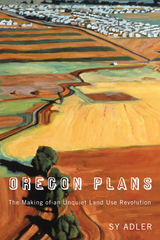
"Adler's story is about unusual conditions, purposeful action, dynamic personalities, and the messiness of democratic and bureaucratic processes. His conclusions reveal much about how Oregonians defined liveability in the late twentieth century." —William L. Lang, from the Preface
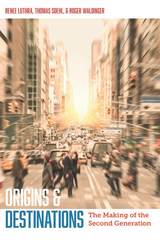
Using surveys of second generation immigrant adults in New York and Los Angeles, Origins and Destinations explains why second generation experiences differ across national origin groups and why immigrant offspring with the same national background often follow different trajectories. Inter-group disparities stem from contexts of both emigration and immigration. Origin countries differ in value orientations: immigrant parents transmit lessons learned in varying contexts of emigration to children raised in the U.S. A system of migration control sifts immigrants by legal status, generating a context of immigration that favors some groups over others. Both contexts matter: schooling is higher among immigrant children from more secular societies (South Korea) than among those from more religious countries (the Philippines). When immigrant groups enter the U.S. migration system through a welcoming door, as opposed to one that makes authorized status difficult to achieve, education propels immigrant children to better jobs.
Diversity is also evident among immigrant offspring whose parents stem from the same place. Immigrant children grow up with homeland connections, which can both hurt and harm: immigrant offspring get less schooling when a parent lives abroad, but more schooling if parents in the U.S. send money to relatives living abroad. Though all immigrants enter the U.S. as non-citizens, some instantly enjoy legal status, while others spend years in the shadows. Children born abroad, but raised in the U.S. are all everyday Americans, but only some have become de jure Americans, a difference yielding across-the-board positive effects, even among those who started out in the same country.
Disentangling the sources of diversity among today’s population of immigrant offspring, Origins and Destinations provides a compelling new framework for understanding the second generation that is transforming America.
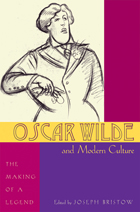
Oscar Wilde and Modern Culture: The Making of a Legend explores the meteoric rise, sudden fall, and legendary resurgence of an immensely influential writer’s reputation from his hectic 1881 American lecture tour to recent Hollywood adaptations of his dramas. Always renowned—if not notorious—for his fashionable persona, Wilde courted celebrity at an early age. Later, he came to prominence as one of the most talented essayists and fiction writers of his time.
In the years leading up to his two-year imprisonment, Wilde stood among the foremost dramatists in London. But after he was sent down for committing acts of “gross indecency” it seemed likely that social embarrassment would inflict irreparable damage to his legacy. As this volume shows, Wilde died in comparative obscurity. Little could he have realized that in five years his name would come back into popular circulation thanks to the success of Richard Strauss’s opera Salome and Robert Ross’s edition of De Profundi. With each succeeding decade, the twentieth century continued to honor Wilde’s name by keeping his plays in repertory, producing dramas about his life, adapting his works for film, and devising countless biographical and critical studies of his writings.
This volume reveals why, more than a hundred years after his demise, Wilde’s value in the academic world, the auction house, and the entertainment industry stands higher than that of any modern writer.
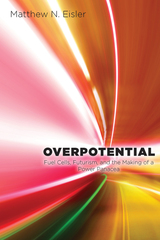
It sounds so simple. Just combine oxygen and hydrogen in an electrochemical reaction that produces water and electricity, and you’ll have a clean, efficient power source. But scientists have spent decades—and billions of dollars in government and industry funding—developing the fuel cell. There have been successes and serendipitous discoveries along the way, but engineering a fuel cell that is both durable and affordable has proved extraordinarily difficult.
Overpotential charts the twists and turns in the ongoing quest to create the perfect fuel cell. By exploring the gap between the theory and practice of fuel cell power, Matthew N. Eisler opens a window into broader issues in the history of science, technology, and society after the Second World War, including the sociology of laboratory life, the relationship between academe, industry, and government in developing advanced technologies, the role of technology in environmental and pollution politics, and the rise of utopian discourse in science and engineering.
READERS
Browse our collection.
PUBLISHERS
See BiblioVault's publisher services.
STUDENT SERVICES
Files for college accessibility offices.
UChicago Accessibility Resources
home | accessibility | search | about | contact us
BiblioVault ® 2001 - 2024
The University of Chicago Press









